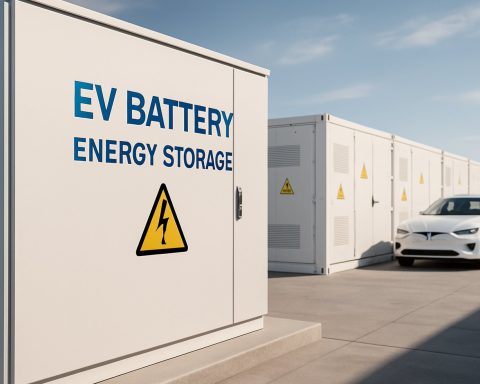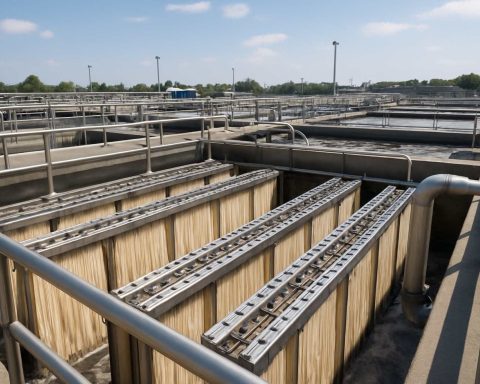Utah has joined forces with Texas and Last Energy Inc., a company specializing in nuclear microreactors, to challenge federal nuclear regulations. This legal action, filed in the Eastern District of Texas, argues that the current regulations imposed by the U.S. Nuclear Regulatory Commission negatively impact the health and economic development of Utah residents. Advocates for nuclear power in the state believe these restrictions impede progress towards safe and reliable energy alternatives.
Despite aspirations to make Utah a international center for nuclear power, there is an ongoing conversation among locals regarding safety and regulatory standards. Many supporters express their belief in the necessity of nuclear energy for a sustainable future, positioning it as a viable alternative to fossil fuels. Yet, there are also voices of caution, emphasizing that the safety and oversight of such technology must be prioritized.
The debate captures a variety of opinions. Some residents insist on the potential benefits of advancing nuclear technology, while others have concerns about whether Utah may become an experimental ground for such projects without adequate safeguards. Encouragingly, this topic continues to stimulate dialogue among Utahns as they contemplate the best energy solutions for their state.
As the state navigates these complex discussions, residents are encouraged to engage further and share their thoughts on the future of nuclear energy in Utah.
The Bigger Picture: Nuclear Energy and Its Broader Implications
As Utah, Texas, and Last Energy Inc. embark on this legal battle against federal nuclear regulations, the implications extend far beyond the courtroom. This legal move underscores a fundamental shift in how states view energy sovereignty amid escalating global tensions surrounding energy security and climate change. By pursuing a nuclear pathway, Utah could emerge as a leader in sustainable energy, potentially influencing national energy policy.
The economic ramifications are significant. A successful challenge to regulatory barriers could accelerate investments in nuclear infrastructure, potentially generating thousands of jobs in construction, operation, and maintenance of microreactor facilities. This growth could provide a blueprint for similar initiatives in other states, amplifying the call for a nuclear renaissance across America.
However, the environmental impacts warrant careful consideration. The transition to nuclear energy promises substantial reductions in greenhouse gas emissions when compared to fossil fuels. Yet, the long-term risks associated with nuclear waste, potential accidents, and resource depletion remain unresolved challenges. The conversation must envelop not only the benefits of nuclear energy but the critical examination of its environmental footprint.
Looking ahead, the trajectory of this initiative could reveal vital trends in energy diversification. As societal preferences shift towards cleaner energy sources, states like Utah could inspire a nationwide reconsideration of energy policies. The outcome of this endeavor may define the future landscape of American energy, encapsulating the delicate balance between innovation, safety, and sustainability in an ever-evolving global economy.
Utah’s Bold Move: Challenging Nuclear Regulations for a Sustainable Future
Introduction
Utah is taking a significant step in the realm of energy production by aligning with Texas and Last Energy Inc. to contest federal nuclear regulations. This legal initiative aims to reshape the nuclear landscape, particularly focusing on the U.S. Nuclear Regulatory Commission’s (NRC) guidelines that some claim hinder economic growth and public health in Utah.
Regulatory Overview
The legal action, filed in the Eastern District of Texas, emphasizes the belief that current regulations may obstruct progress toward safer and innovative energy solutions. Proponents argue that these regulations limit Utah’s potential to become a leading hub for nuclear energy, which they see as a critical alternative to fossil fuels.
Benefits of Nuclear Power
Nuclear energy presents numerous advantages:
– Sustainability: It generates significant amounts of energy with minimal greenhouse gas emissions, contributing to a reduction in carbon footprint.
– Reliability: Nuclear plants provide a stable supply of energy, operating at high capacity factors, unlike some renewable energy sources that depend on environmental conditions.
– Economic Development: New nuclear projects could stimulate job growth and technological advancements within the state.
Community Perspectives
The conversation surrounding nuclear energy in Utah is multifaceted. Advocates argue that embracing nuclear power is essential for a sustainable energy future, while critics voice concerns regarding the potential risks associated with nuclear technology.
– Supporters’ Viewpoint: Many residents support nuclear energy, arguing it is key to achieving energy independence and environmental goals.
– Opponents’ Concerns: Others worry about inadequate safety measures and the risk of Utah becoming a testing ground for unproven technologies.
Safety and Oversight
A critical aspect of the ongoing debate is ensuring robust safety protocols are in place. Advocates for nuclear power emphasize the importance of stringent oversight to protect public health and the environment. The technology involved in nuclear energy production is complex, and thorough regulatory frameworks are necessary to monitor developments effectively.
Public Engagement and Dialogue
Residents have been encouraged to take part in community discussions about the future of nuclear energy in Utah. Engaging with experts, attending public forums, and voicing opinions can help shape policies that align with the interests and safety of all citizens.
Conclusion
The collaboration between Utah, Texas, and Last Energy Inc. marks a pivotal moment in the energy discourse within the United States. As the state embarks on this legal journey, balancing energy innovation with public safety remains paramount. The ongoing dialogue among residents reflects a shared interest in securing a sustainable and economically viable energy future for Utah.
For more insights on energy policies and trends, visit Energy.gov.











